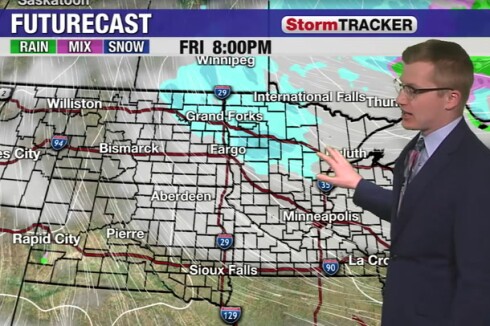ASHLAND — Drones will be patrolling Lake Superior for the next few weeks — some underwater, some on the surface — trying to document how many little fish live in the big lake.
In addition to two 23-foot automated sailboards on the surface, first reported last week by the News Tribune , a long-range autonomous underwater vehicle will be below the surface documenting schools of the smaller fish — smelt, herring, whitefish and others — that make up the food for the lake’s big fish like trout, salmon and walleye.
The drones were launched Tuesday in Ashland, with the surface vessels out over the next 25 days along both the north and south shores.

The project is headed by the U.S. Geological Survey’s Great Lakes Science Center but has partners across the region — including the Grand Portage and Red Cliff bands of Ojibwe, the U.S. Fish and Wildlife Service, natural research agencies in Ontario, Minnesota and Wisconsin as well as Michigan Tech and Cornell universities and the Great Lakes Fishery Commission.
The research is part of a three-year project to study the prey fish population in all of the Great Lakes, said Peter Esselman, research fisheries biologist for the USGS based in Ann Arbor, Michigan.
ADVERTISEMENT
The quiet drones will help verify data collected by research agencies from big boats, like the USGS’ own 107-foot Kiyi that is stationed in Ashland. But scientists know that those big boats scare away some fish before they can be documented, so the quiet, pollution-free drones will be able to see just how many fish the big boats have been missing.
“We know that the data is skewed by the noise the big boats make, so now we can compare the information we get from the drones with the data we get from our traditional sources and see what we have,” Esselman told the News Tribune.

The drones are not just quieter and much cheaper to operate, but they don’t belch diesel smoke like big research boats.
“I don’t see that these (drones) will ever replace our big boats for research. There’s still real value in netting an actual fish and in being able to look at the fish in person in the lab,” he said. “But having the ability to be out there 24/7 for long periods gathering this data, I think, is going to help give us a better picture of what prey fish are out there.”
Those prey fish are the ones that feed the bigger netted and angled fish and support the $7 billion annual Great lakes fishery, Esselman noted.
The underwater drones, which look like torpedoes, will be cruising about 130 feet under the surface of Superior and can shoot sonar both up and down in the water.
“When we use sonar from our bigger boats, we miss the top 12 feet or so of the water column, so we know we are missing fish there, especially in the warmer water periods like now,” Esselman said. “The underwater (drones) can shoot up and document those fish near the surface.”
The bright orange surface drones are controlled from the California headquarters of their company, Saildrone. They move at just a couple nautical miles per hour, and boaters are asked to stay away from them. The underwater drones surface every 30 minutes to confirm their location by GPS and to report in.
ADVERTISEMENT
“We’re also asking that boaters not interact with the underwater drones if they see them on the surface,” Esselman said.

This is the second year of the three-year project. Last summer two Saildrones were deployed from Holland, Michigan and sailed up Lake Michigan to the Straits of Mackinac and then down Lake Huron before being recovered in Port Huron. Next year the units will be used on Lake Erie,
The Great Lakes are one of the most ecologically diverse ecosystems on Earth, home to nearly 139 native species of fish. Commercial, recreational and tribal fisheries support more than 75,000 jobs, according to the Great lakes Fishery Commission.
The underwater drone was developed by the Monterey Bay Aquarium Research Institute.
California-based Saildrone says its units have sailed more than 800,000 nautical miles and spent more than 18,000 days at sea "collecting data that provides unprecedented intelligence for climate, mapping and maritime security applications."














